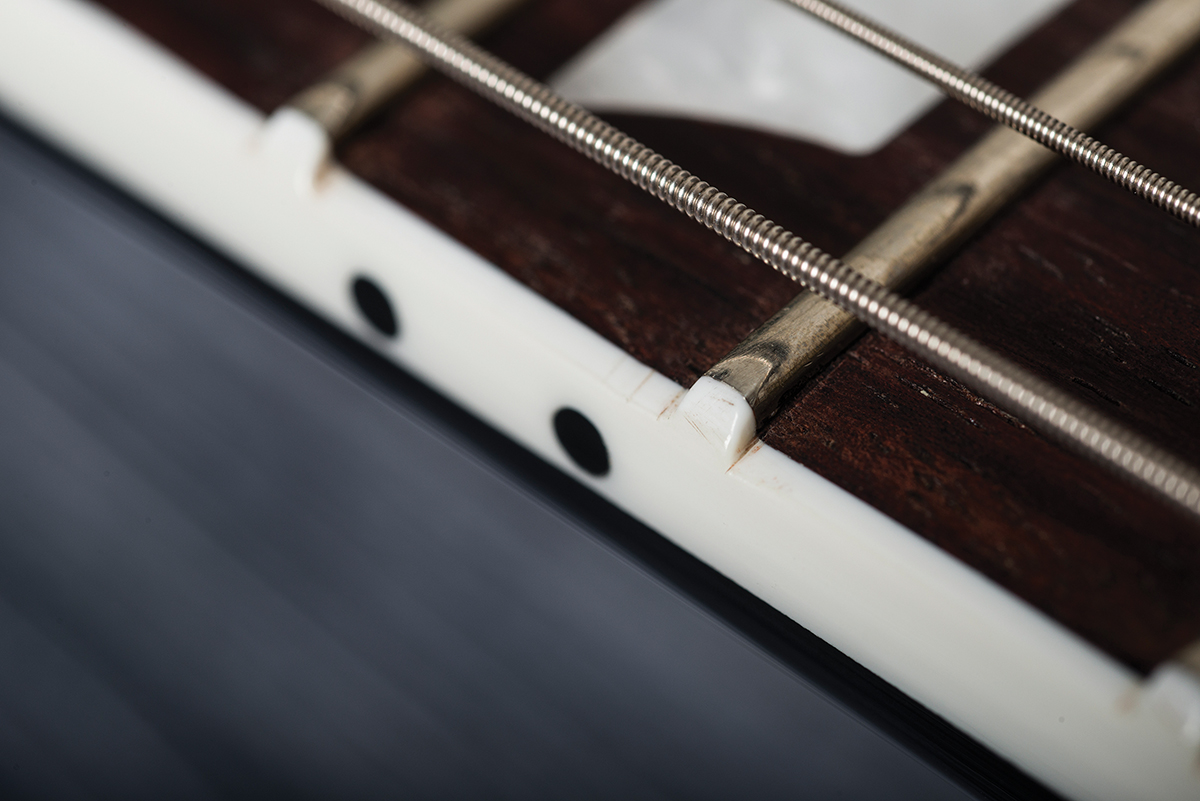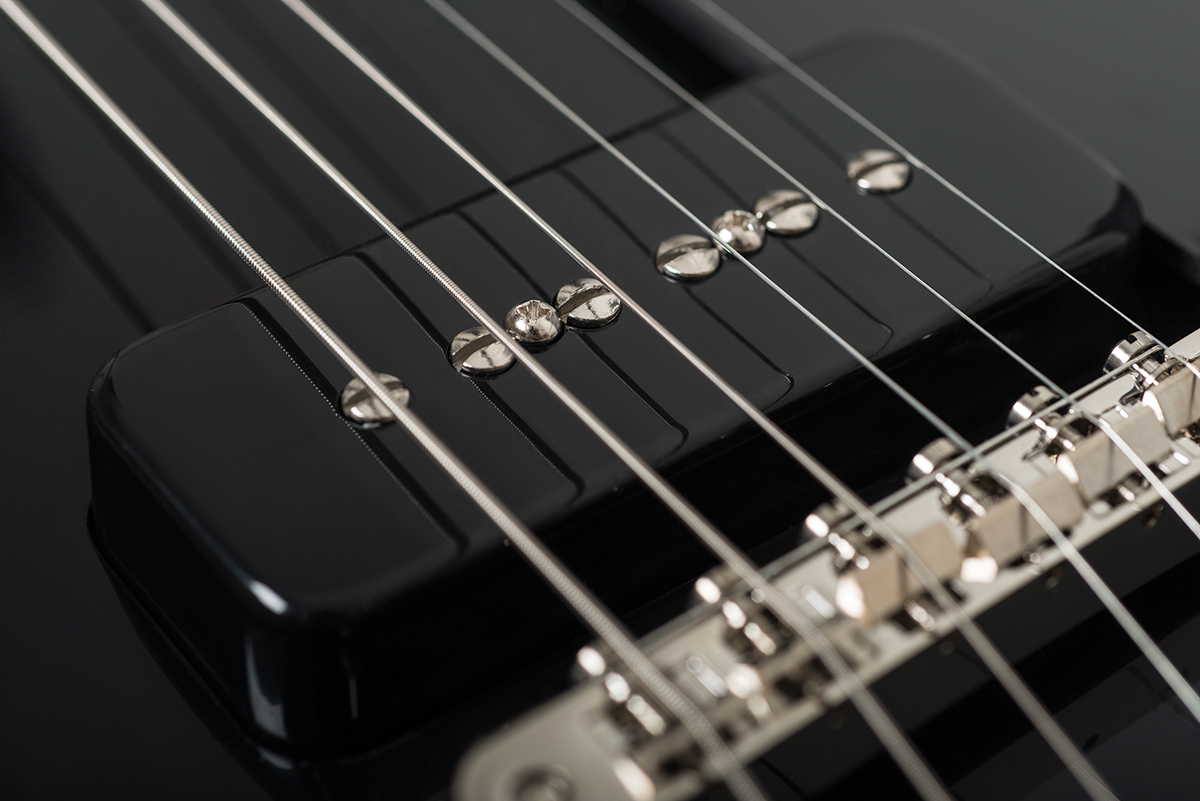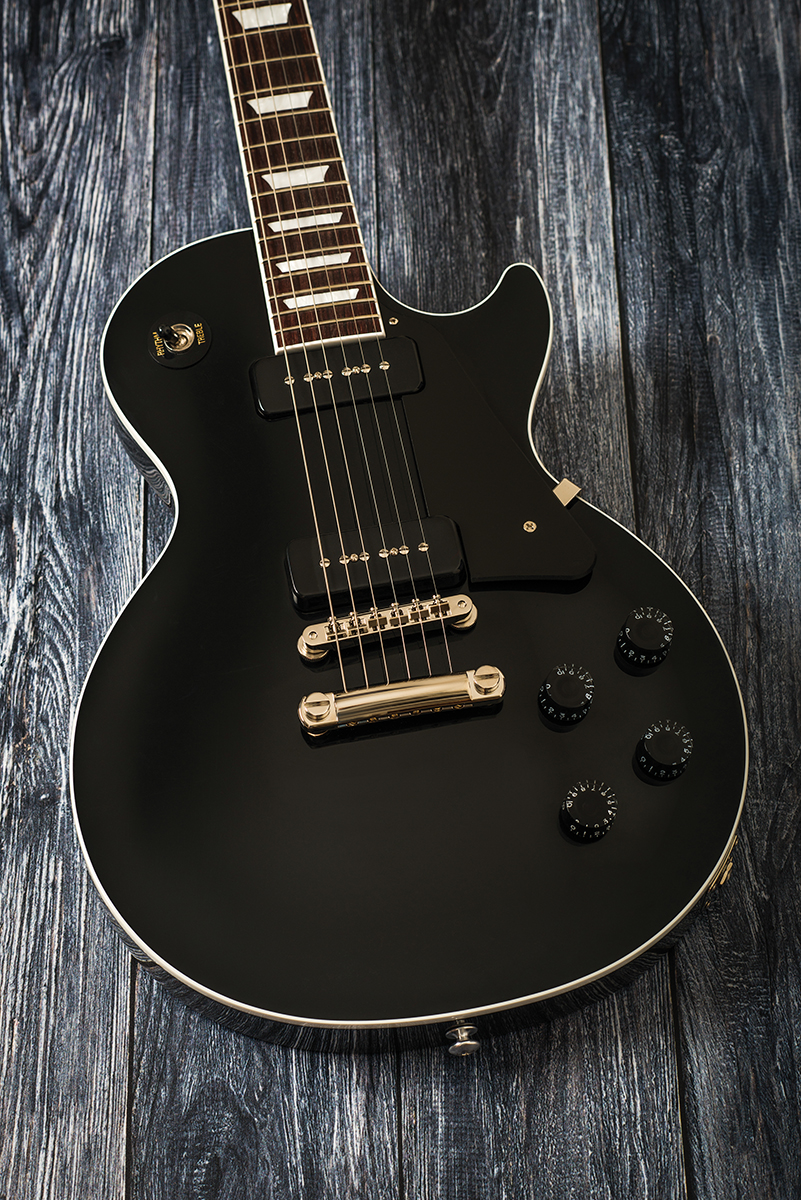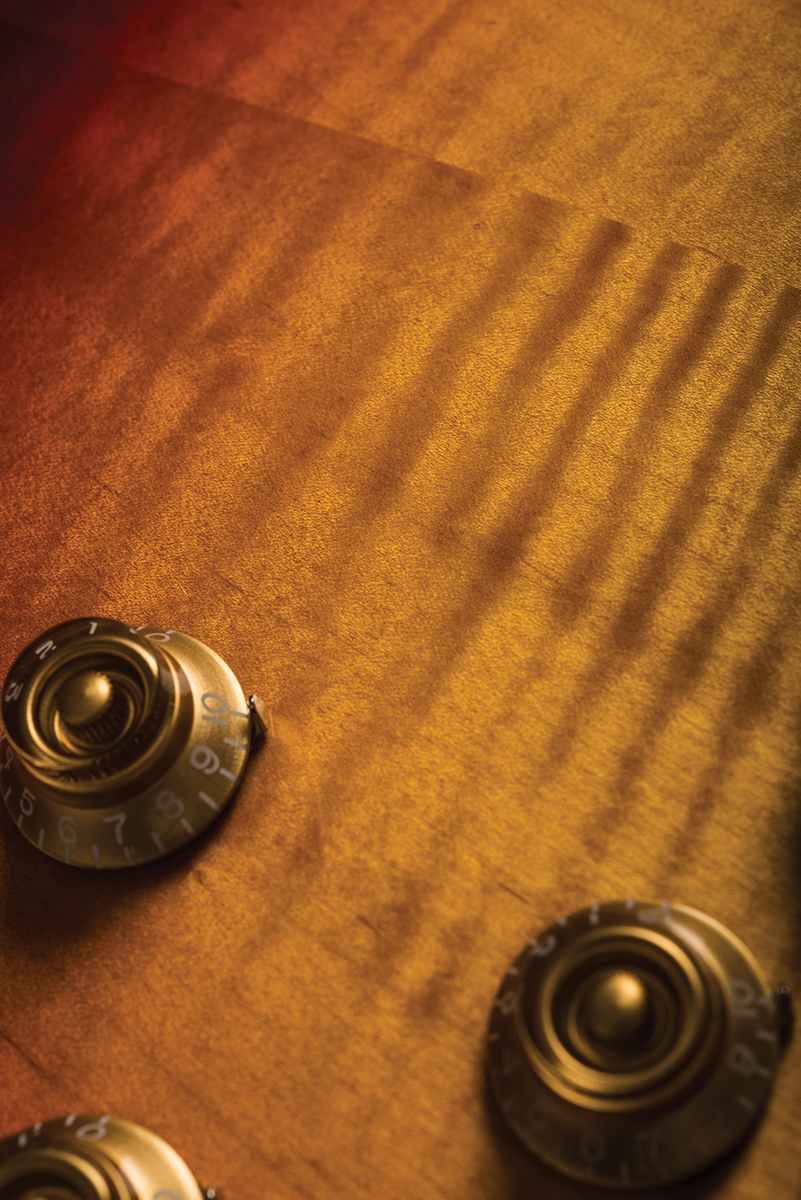Related Tags
Gibson 2018 Les Paul Classic & Traditional Review
What do Gibson’s new 2018 models have to offer players looking for a sensibly priced Les Paul with vintage stylings?

Gibson just can’t stay out of the headlines. And if the old adage that ‘there’s no such thing as bad publicity’ is true, then Gibson’s decision to skip the Winter NAMM Show and head to the Consumer Electronics Show in Las Vegas instead – complete with an appearance from the fastest man in history, Usain Bolt – might just have been a smart bit of marketing. And while reports on the company’s finances continue to paint a less than rosy picture, despite the forays into lifestyle and pro-audio, Gibson’s core business is still the manufacture – and sale – of an awful lot of electric guitars.
For several years now, Gibson’s Nashville-made USA line has been subject to annual updates – lest we forget the G Force tuners, Zero Fret Adjustable Nuts and wider necks and fingerboards of 2015 – and in order to sample the class of 2018, we grabbed a pair of new Les Pauls from the wall of the new Peach Guitars superstore in Colchester. Although the 2018 line does include some more radical-looking models such as the HP-II in Hot Pink Fade, we opted to cast an eye over the Les Paul Classic and Traditional as they’re likely to be more universal in their appeal.

The Traditional aims to tick all of the right boxes for fans of the Burst aesthetic without heading either too far down the rabbit hole of vintage accuracy or too far into orbit in terms of price. You get a choice of three sunburst finishes, an AA grade figured maple cap on a non-weight-relieved mahogany body, a nicely-rounded mahogany neck with a rosewood fingerboard, binding nibs on the fret-ends and a gloss nitrocellulose finish. For aniline dye, hide glue, a long neck tenon, a deeper top carve and visible maple in the cutaway you’ll have to visit Gibson Custom and part with at least twice as much cash.
Case candy is generous and includes the pickguard and pickup selector ‘poker chip’ (should you wish to fit them) plus a Gibson logo-embossed leather strap and a handy multi-tool for maintenance purposes. There’s also a photograph of your instrument taken following final inspection at the factory.

Les Is More
The Sunburst Traditional model comes loaded with a BurstBucker 1 and 2 in the neck and bridge respectively, while the Classic – represented here in moody all-black but also available in Goldtop and Pelham Blue configurations, all three with plain maple tops beneath the paintwork – harks back to ’56 and features a pair of P-90 pickups. Unlike the Traditional, the Classic features Grover machineheads rather than vintage-style keystones, speed knobs rather than bonnets and a player-friendly slim-taper neck profile.
Features common to both guitars include Gibson’s ‘Tektoid’ graphite nut, Orange Drop tone capacitors, Gibson-branded potentiometers, and aluminium shielding plates in the control cavity. Both instruments are equipped with strap buttons that are approximately 15mm in diameter rather than 12mm vintage-style buttons and, in combination with our favoured Grolsch washer straplocks, they feel reassuringly secure when strapped on.
Although Gibsons were never built with laser-like precision, the overall construction standard exhibited by both guitars is neat and clean and bang-on for the money, with very little to complain about. The abundant striping on the Traditional’s flame maple top is worthy of note: it ripples beautifully under light and invites you to dive in. Its rosewood fingerboard could perhaps have been given one more pass with a fine-grade sander before leaving the Gibson factory, but it’s nothing that a few minutes with some Micro-Mesh can’t remedy.

In Use
The Traditional feels immediately familiar and like all the best neck profiles, it just gets out of the way. The rounded C isn’t the deepest you’ll encounter on a Les Paul, especially down towards the nut, but experience tells us that the shape of the carve has more influence on player comfort than overall depth – we’ve played many chunky necks that, thanks to elegantly carved shoulders, make a nonsense of the notion that slimmer profiles are easier to handle. Likewise a slim profile with too much shoulder can quickly be fatiguing during a long live set or recording session.
The size and shape of one’s hands also plays a part but we can’t imagine many players finding fault with the Traditional’s supremely comfortable dimensions or excellent medium weight. The Classic, meanwhile, is a much heavier beast at 10.2lbs but the body-heaviness is more noticeable when playing seated than standing as when strapped on, the weight is distributed very evenly. Don’t let the weight put you off, either – some of the very best sounding Les Pauls we’ve ever encountered have been 10-pound Goldtops. The Classic’s Slim Taper neck is more of a nod to the early 60s than the 50s, but happily it’s not as emaciated and flat as some Gibson necks from the 60s era.

So what is it about Les Pauls with P-90s that has us completely smitten? They simply do pretty much everything very well, and are really inspiring in the process – whether it’s the raunchiest filth or pretty, almost Strat-like cleans and all points in between. Plug a good P-90 Les Paul straight into a low-powered tweed amp and there’s enough tonal variation on tap to make a whole album and never need to change guitars.
The Classic exhibits some of these characteristics but there’s definitely a hotter P-90 vibe here that isn’t quite as woody and cultured as that of the lower-wound pickups of the early 50s – it’s a real rocker though, and it works fantastically well for punk and power-pop riffs and rhythms. Where some P-90 LPs feel made for tweed, for lead work we prefer the Classic into an amp with more of a cranked Blackface vibe – a range of expressive and creamy solo tones await discovery.

Plugged in, the Traditional is lively, with plenty of sustain and resonance and enough high-end to do what lots of 1990s Les Pauls with humbuckers can’t – ie, go beyond mid-rich rock tones into a cleaner world and offer much harmonic interest. That said, it’s a guitar with a big voice with huge bass as well as treble, and it handles aggressive rock ’n’ roll and lead fireworks very well indeed. There’s plenty of high-end retained when you roll back the volume controls too, although neither tone pot does a great deal until the lower reaches of its taper – as a result, the menu of Clapton-esque ‘woman’ tones on offer is somewhat reduced.
There are certainly more sophisticated and focused PAF-style humbuckers out there than Gibson’s BurstBuckers but the quality of the chassis is very good here so it wouldn’t be a false economy to upgrade – and we’d likely be saying the same thing about the pickups if it were a seven grand Collector’s Choice model. But this is a good-sounding Les Paul nevertheless, and only those chasing truly authentic Burst tones will likely hear anything amiss.

KEY FEATURES
Gibson 2018 Les Paul Classic
• PRICE £1,799 (inc hard case)
• DESCRIPTION Solidbody, single-cutaway electric guitar. Made in USA
• BUILD Mahogany body with plain maple cap, set mahogany neck, 12-inch radius bound rosewood fingerboard with acrylic trapezoid inlays and 22 medium cryogenically treated frets
• HARDWARE Nickel ABR bridge and aluminium stop tailpiece, Grover tuners
• ELECTRICS 2x P-90 pickups, 2x volume, 2x tone, 3-way toggle pickup selector switch
• SCALE LENGTH 24.75”/629mm
• NECK WIDTH 42mm at nut, 52mm at 12th fret
• NECK DEPTH 21.4mm at first fret, 25.3mm at 12th fret
• STRING SPACING 35.2mm at nut, 51.3mm at bridge
• WEIGHT 10.2lbs/4.6kg
• FINISH Ebony nitrocellulose (as reviewed), Goldtop, Pelham Blue
KEY FEATURES
Gibson 2018 Les Paul Traditional
• PRICE £2,199 (inc hard case)
• DESCRIPTION Solidbody, single-cutaway electric guitar. Made in USA
• BUILD Mahogany body with AA flame maple cap, set mahogany neck, 12” radius bound rosewood fingerboard with acrylic trapezoid inlays and 22 medium cryogenically treated frets
• HARDWARE Nickel ABR bridge and aluminium stop tailpiece, vintage-style keystone tuners
• ELECTRICS BurstBucker 1 (neck), BurstBucker 2 (bridge), 2x volume, 2x tone, 3-way toggle pickup selector switch
• SCALE LENGTH 24.75”/629mm
• NECK WIDTH 42mm at nut, 52mm at 12th fret
• NECK DEPTH 20.4mm at first fret, 22.7mm at 12th fret
• STRING SPACING 34.8mm at nut, 51.4mm at bridge
• WEIGHT 8.6lbs/3.9kg
• FINISH Heritage Cherry Sunburst nitrocellulose (as reviewed), Honey Burst, Tobacco Sunburst Perimeter
• CONTACT Peach Guitars 01206 765 777, peachguitars.com, www.gibson.com
